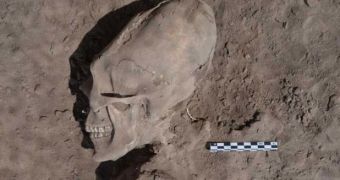Archaeologists exploring an ancient Mexican cemetery near the village of Onavas have recently stumbled upon several skulls whose shape might have some people wandering whether or not there was a time in history when aliens walked amongst us.
This is because the 1000-year-old skulls are highly elongated, and look fairly similar to the alien heads that Hollywood made sure to introduce us to. However, the archaeologists who found them explain that these are by no means alien skulls.
Quite the contrary: they used to belong to humans who “fell victims” to the practice of binding heads. Apparently, having an unique head shape was the “proper” way to differentiate between social classes in Mesoamerican cultures.
Daily Mail quotes archaeologist Cristina Garcia Moreno, who explained this finding as follows: “Cranial deformation in Mesoamerican cultures was used to differentiate one social group from another and for ritual purposes.”
The practice of binding heads involved the placing of one's head inside a wooden support whose tightness eventually altered its shape.
An individual's head would have had to be bonded in this manner at about one month of age, and the bondage would have stayed in place for the following five months.
Out of 25 ancient skeletons found at this digging site, 13 had such alien-looking skulls, and 5 also displayed clear signs of purposely-done dental mutilation.
It is the archaeologist's belief that this dental mutilation was part of a rite of passage from childhood into adolescence.
“The dental mutilation in cultures such as the Nayarit was seen as a rite of passage into adolescence. This is confirmed by the findings at the Sonora cemetery where the five bodies with dental mutilation are all over 12 years in age,” Cristina Garcia Moreno explained.
This research was conducted on behalf of the Arizona State University following the archaeologists' getting approval from the National Institute of Anthropology and History.

 14 DAY TRIAL //
14 DAY TRIAL //